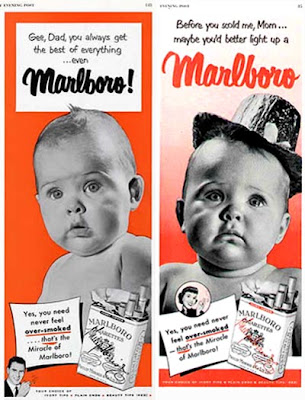Just look at all these rough and tough American soldiers knitting in Baghdad, Iraq!
Sergeant Sorich is on the far right, closest to the camera. Last February 18th, he wrote to me: “There ended up being ten of us that knit in our group. Our group was also given a very masculine and Army name... ‘Knit Shit.’ Sorry for the language but the name stuck. Ha ha.”
Who cares about the language? I think it’s awesome! Especially as these knitters not only kick butt, they’re doing it with vintage patterns!
To find out how all this coolness came about (plus WWII patterns!):
According to Sergeant Sorich, “It all began with me throwing some knitting supplies in a footlocker before heading to Iraq in January 2009. I had also thrown my favorite knit hat in with it (the Knit for Defense Cap). For months and months, I had no time (or desire) to knit. The regular 120+ degree heat and daily work were enough to drive a person insane.”
“Around last October, a fellow Sergeant in my Platoon saw my knit watch cap and asked about it. "I made it." was my response. He couldn't believe it (seeing how the pattern of the hat is such a tight knit). "Could you teach me?" is where it started. As word spread and my cap was shown around, I didn't expect the kind of enthusiasm it would bring.”
“Among the most interested were the Platoon's male Sergeants and Staff Sergeants (key leaders). So we were able to get knitting supplies sent to us and we began to knit together outside as the weather improved. Around November, our group was in full scale production making scarves and hats. Many made items for their kids or their spouse in time for Christmas.”
I think that’s the perfect way to show your family that they’re still in your thoughts, even though you’re far away.“At first, our Platoon Sergeant (our boss), and many Soldiers in our Company thought it was a little strange.”
Here’s a picture of their Platoon Sergeant looking very bemused, indeed.“However, after seeing the items that were being knit, everyone was supportive and wanted to see our completed items. Knitting wasn't just a productive thing for us to do, it gave everyone involved a totally different skill to be proud of. As people finished their project, they proudly brought it around to other knitters and non-knitters and showed off their work. It has done more than you think, it has been a great stress reliever!”
“Today is our last day in Iraq! So I am writing this while packing my last bit of stuff. My most precious items I am bringing home are my knit caps I made for my friends (ten of them). Total stitches of all ten hats is about 62,000 sts.”
Sergeant Sorich is a member of the 401st Bridge Engineer Company, US Army Reserve. Not that I’m implying Engineers are obsessed with numbers.
Hey, let’s look at some more pictures!
“Though frustrated, Sergeant Voigt is able to laugh at himself getting tangled in his own yarn while he is still learning to knit the cap.”
“Another practical reason for learning to knit. I knit together parachute cord (550 cord) to make a M4 magazine pouch. (This I got many compliments on and people wanting me to make them one).”
“A closer look at the pouch. It was difficult to knit with the paracord because it was so thick...I ended up using pencils to get the stitches to looks and feel right. I knitted a flat square, then stretched it around a 30 round magazine and sewed up the sides. I attached a button on a single loop release to hold in the mag.”
This very practical magazine cozy can also be unraveled into a single long rope, which is useful if you get lost in the desert.
As opposed to this whole-rifle cozy, which I stumbled over while randomly clicking around on the Internet:
At least, I think there’s a rifle under there somewhere.
Let’s return to the Sergeant Sorich’s far more pragmatic and well made knits:
“As you can see I have knit from the same color of yarn for all the WWII items. I am also a part of the Historical Reenactment Society in Minnesota at historic Fort Snelling. I picked up knitting as a way to make period correct garments. I now have a great deal of respect and pride in the mothers, grandmothers, children, and men that knit during the wars for the fighting military men. It is amazing to think of an entire nation of knitters all striving to outfit the millions of troops in the US armed forces during such dire times.”
“I matched this color of yarn off an original US WWII glove that was knit by the Red Cross. The yarn is great to work with; it's Cascade Yarns 220 Heathers color #9459. It is the best and closest color I have found to work with and I think it is about the same size and weight of what was used in the 40s. The pictures don't give the exact color correctly, it's a mix of greenish, olive, brown, something??”
“Like I said, the cap is what has been the most popular thing to make, wear and give away here. It is not Army regulations anymore but it is nice to wear in your civilian life...or if you are a WWII re-enactor ;) I didn't see that pattern up on your site, I'm sure your readers would find that to be a fun and sharp looking item to make.”
Sincerely,
Staff Sergeant John Sorich IV
401st Bridge Engineer Company
US Army Reserve
He’s right! But these patterns are much too cool to mock, so I’ll just include a link to printable patterns for the hat and socks at the end of this post.“I am also looking for help! I am currently trying to find WWII British Military patterns and pictures of knit items. I know very little about the ‘Knit for Britain’ program that was launched during WWII to outfit British troops. I'd like to find some patterns and info on that....if you know of any it would be very appreciated!”
Go! Knit!
But before you do, there’s one quick request from Sergeant Sorich:
Unfortunately, I wasn’t able to help him. But if anyone here knows anything, please e-mail me and I’ll forward your letter to Sergeant Sorich.
After all, soldiers love getting mail from knitters!
Most of the time!
Click here for the printable Cap pattern.
Click here for the printable Spiral Sock pattern.
Read more!























































